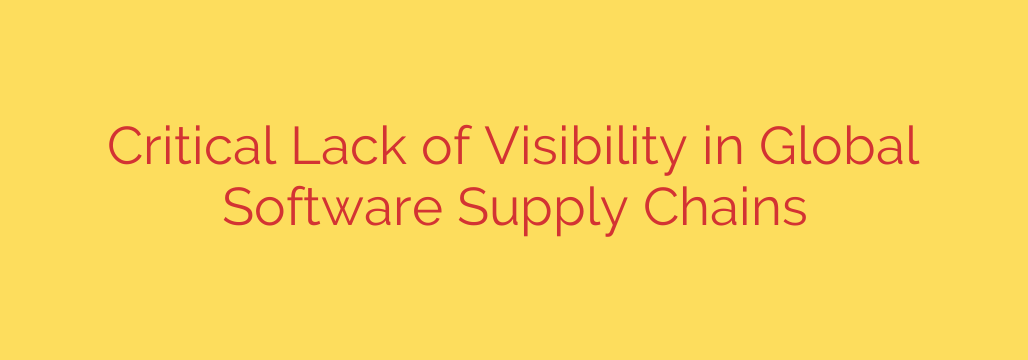
Navigating the Invisible: Why Global Software Supply Chain Visibility is Critical
Modern software is rarely built from scratch. Instead, it’s a complex tapestry woven from countless components – proprietary code, commercial off-the-shelf software, and, increasingly, vast amounts of open-source libraries and frameworks. This layered structure allows for rapid innovation, but it also creates a significant challenge: a critical lack of visibility into the origins, integrity, and security posture of every piece of code we use.
For many organizations, the software supply chain resembles a black box. They know what their final application does, but they have limited insight into the journey of its constituent parts – who wrote a particular library, how it was built, what vulnerabilities it might contain, or if it has been tampered with along the way. This blind spot is not merely an operational inconvenience; it represents a profound security risk with far-reaching implications.
The dangers of this hidden landscape have been starkly illustrated by major security incidents that exploited weaknesses deep within the software supply chain, bypassing traditional perimeter defenses. Attackers have targeted build processes, injected malicious code into trusted components, or leveraged known vulnerabilities in popular open-source dependencies that organizations were unaware they were using.
The Core Problem: Understanding the Layers
The lack of visibility stems from several factors:
- Deep Dependencies: Software often relies on libraries that, in turn, rely on other libraries, creating a complex, multi-level dependency tree that is hard to map manually.
- Open Source Proliferation: While incredibly valuable, the sheer volume and rapid evolution of open-source software make tracking versions, patches, and licenses challenging.
- Complex Build Processes: The steps involved in compiling, packaging, and distributing software can introduce vulnerabilities or opportunities for malicious injection if not properly secured and monitored.
- Third-Party Integrations: Incorporating software or services from vendors adds another layer of abstraction and requires trust that is often difficult to verify thoroughly without transparency.
Without visibility into these layers, organizations are left vulnerable to supply chain attacks and are ill-equipped to respond quickly when new vulnerabilities (like those in widely used logging libraries or essential infrastructure components) are discovered.
The Imperative for Transparency
Addressing this critical gap requires a fundamental shift towards prioritizing software supply chain security and demanding transparency. A key tool emerging to provide this necessary insight is the Software Bill of Materials (SBOM).
An SBOM is essentially an ingredient list for your software. It’s a structured inventory of the components, libraries, and modules used in a software product, along with information like version numbers, authors, and dependencies. Having an SBOM allows organizations to:
- Identify and track components: Understand exactly what is inside their software and where it came from.
- Manage vulnerabilities: Quickly determine if their software is affected when a new vulnerability is disclosed in a specific component.
- Ensure compliance: Track licenses and adhere to regulatory requirements regarding software transparency.
- Assess risk: Make informed decisions based on the known security posture of their software’s ingredients.
Beyond the SBOM: Building a Secure Chain
While SBOMs are a vital step, achieving robust software supply chain security requires a multi-faceted approach. Organizations should also consider:
- Securing the Build Environment: Implementing rigorous security measures around build servers and processes to prevent tampering.
- Integrity Verification: Using digital signatures and cryptographic hashes to verify the authenticity and integrity of software components throughout the supply chain.
- Vetting Third-Party Components: Establishing processes to evaluate the security practices of vendors and open-source projects.
- Continuous Monitoring: Regularly scanning software components for known vulnerabilities and suspicious activity.
- Establishing Secure Development Practices: Integrating security throughout the software development lifecycle (SDLC).
The digital landscape is built on software, and the security of that landscape depends on the security of its foundational components. The critical lack of visibility in global software supply chains is a challenge that organizations can no longer afford to ignore. By embracing tools like SBOMs and implementing comprehensive security practices, businesses can shed light on the hidden dangers and build a more resilient and trustworthy software ecosystem. Improved visibility is not just a best practice; it’s a non-negotiable requirement for navigating the modern threat landscape.
Source: https://www.helpnetsecurity.com/2025/07/10/low-global-software-supply-chain-visibility/








